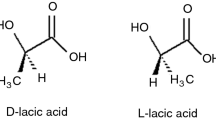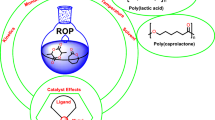Abstract
The synthesis of linear and branched hydrophobically water soluble (co) polymers composed of acrylamide (AM), lauryl acrylate (LA) and N,N′-methylenebis (acrylamide) was carefully carried out via a one-pot process using the reversible addition-fragmentation chain transfer (RAFT) polymerization in aqueous media. The polymerization reactions were triggered out by sequential addition of monomers in the absence of surfactant through thermal initiation using 4,4′-azobis(4-cyanopentanoic acid)-ACPA as initiator. For understanding the influence of both hydrophobic and crosslinking agent on the structure and rheological properties thus the synthesized polymers were thoroughly characterized. Size exclusion chromatography (SEC), nuclear magnetic resonance (NMR) and dynamic light scattering (DLS) analyses demonstrated the insertion of hydrophobic block inside the polymeric chains. Further, the rheological studies confirmed the influence of both crosslinking agent and hydrophobic block inserted within the backbone polymers on the thickening properties of copolymers obtained in each step.










Similar content being viewed by others
References
Hassanajili S, Abdollahi E (2014) Influence of various reaction media on the thermal and rheological properties of poly(acrylamide-co-N-hexadecylacrylamide). J Appl Polym Sci 131:39939–39951
Lu Y, Meng Z, Gao K, Hou J, Wu H, Kang W (2019) Interaction of amphiphilic polymers with medium-chain fatty alcohol to enhance rheological performance and mobility control ability. Energ Fuels 33:6273–6282
Saindane P, Jagtap RN (2015) RAFT copolymerization of amphiphilic poly (ethyl acrylate-b-acrylic acid) as wetting and dispersing agents for water borne coating. Prog Org Coat 79:106–114
Gbadamosi AO, Junin R, Manan MA, Yekeen N, Agi A, Oseh JO (2018) Recent advances and prospects in polymeric nanofluids application for enhanced oil recovery. J Ind Eng Chem 66:1–19
Khakpour H, Abdollahi M (2016) synthesis, characterization, rheological properties and hydrophobic nano-association of acrylamide/styrene and acrylamide/sodium styrene sulfonate/styrene co-terpolymers. J Polym Res 23:168–177
Druetta P, Raffa P, Picchioni F (2019) chemical enhanced oil recovery and the role of chemical product design. Appl Energy 252:113480–113519
Li X, Xu Z, Yin H, Feng Y, Quan H (2017) Comparative studies on enhanced oil recovery: Thermoviscosifying polymer versus polyacrylamide. Energ Fuels 31:2479–2487
Raffa P, Broekhuis AA, Picchioni F (2016) Polymeric surfactants for enhanced oil recovery: A review. J Pet Sci Eng 145:723–733
Wever DAZ, Picchioni F, Broekhius AA (2011) Polymers for enhanced oil recovery: A paradigm for structure–property relationship in aqueous solution. Prog Polym Sci 36:1558–1628
Liang K, Han P, Chen Q, Su X, Feng Y (2019) Comparative study on enhancing oil recovery under high temperature and high salinity: Polysaccharides versus synthetic polymer. ACS Omega 4:10620–10628
Wu G, Yu L, Jiang X (2018) Synthesis and properties of an acrylamide–based polymer for enhanced oil recovery: A preliminary study. Adv Polym Technol 37:2763–2773
Biggs S, Hill A, Selb J, Candau F (1992) Effect of surfactant on the solution properties of hydrophobically modified polyacrylamide. J Phys Chem 96:1505–1511
Jiménez-Reglado EJ, Selb J, Candau F (2000) Effect of surfactant on the viscoelastic behavior of semidilute solutions of multisticker associating polyacrylamides. Langmuir 16:8611–8621
Zhang Z, Chen Q, Colby RH (2018) Dynamics of associative polymers. Soft Matter 14:2961–2977
Ezzell SA, McCormick CL (1992) Water-soluble copolymers. 39. Synthesis and solution properties of associative acrylamido copolymers with pyrene sulfonamide fluorescence labels. Macromolecules 25:1881–1886
McCormick CL, Nonaka T, Johnson CB (1988) Water-soluble copolymers 27. Synthesis and aqueous solution behaviour of associative acrylamide/N-alkylacrylamide copolymers. Polymer 29:731–739
McCormick CL, Middleton JC, Cummins DF (1992) Water-soluble copolymers. 37. Synthesis and characterization of responsive hydrophobically modified polyelectrolytes. Macromolecules 25:1201–1206
Volpert E, Selb J, Candau F (1996) Influence of the hydrophobe structure on composition, microstructure, and rheology in associating polyacrylamides prepared by micellar copolymerization. Macromolecules 29:1452–1463
Lacik I, Selb J, Candau F (1995) Compositional heterogeneity effects in hydrophobically associating water-soluble polymers prepared by micellar copolymerization. Polymer 36:3197–3211
Volpert E, Selb J, Candau F (1998) Associating behaviour of polyacrylamides hydrophobically modified with dihexylacrylamide. Polymer 39:1025–1033
Jiménez-Regalado EJ, Selb J, Candau F (1999) Viscoelastic behavior of semidilute solutions of multisticker polymer chains. Macromolecules 32:8580–8588
Candau F, Jiménez-Regalado EJ, Selb J (1998) Scaling behavior of the zero shear viscosity of hydrophobically modified poly(acrylamide)s. Macromolecules 31:5550–5552
Pabon M, Selb J, Candau F, Gilbert RG (1999) Polymerization of acrylamide in solution and inverse emulsion: Number molecular weight distribution with chain transfer agent. Polymer 40:3101–3106
Bastiat G, Grassl B, François J, François J (2005) Micellar copolymerization of associative polymers: Study of the effect of acrylamide on sodium dodecyl sulfate–poly(propylene oxide) methacrylate mixed micelles. J Colloid Interface Sci 289:359–370
Feng Y, Billon L, Grassl B, Khoukh A, François J (2002) Hydrophobically associating polyacrylamides and their partially hydrolyzed derivatives prepared by post-modification. 1. Synthesis and characterization. Polymer 43:2055–2064
Jiménez-Regalado EJ, Cadenas-Pliego G, Pérez-Álvarez M, Hernández-Valdez Y (2004) Study of three different families of water-soluble copolymers: Synthesis, characterization and viscoelastic behavior of semidilute solutions of polymers prepared by solution polymerization. Polymer 45:1993–2000
González Coronel VJ, Jiménez-Regalado EJ (2011) Rheological properties of three differen microstructures of water-soluble polymers prepared by solution polymerization. Polym Bull 67:251–262
Rico-Valverde JC, Jiménez-Regalado EJ (2009) Characterization and rheological properties as a function of temperature, of three associative polymers with different microstructutres obtained by solution polymerization. Polym Bull 62:57–67
González-Coronel VJ, Jiménez-Regalado EJ (2009) Synthesis, characterization and rheological properties of three different microstructures of water-soluble polymers prepared by solution polymerization. Polym Bull 62:727–736
Pearson S, St Thomas C, Guerrero SG, D’Agosto F (2017) Opportunities for dual RDRP agents in synthesizing novel polymeric materials. Polym Chem 8:4916–4946
Perrier S (2017) 50th Anniversary Perspective: RAFT polymerization—A user guide. Macromolecules 50:7433–7447
Wever DAZ, Raffa P, Picchioni F, Broekhuis AA (2012) Acrylamide homopolymers and acrylamide-N-isopropylacrylamide block copolymers by atom transfer radical polymerization in water. Macromolecules 45:4040–4045
Fan Y, Boulif N, Picchioni F (2018) Thermo-responsive starch-g-(PAM-co-PNIPAM): Controlled synthesis and effect of molecular components on solution rheology. Polymers-Basel 10:92. https://doi.org/10.3390/polym10010092
Wever DAZ, Riemsma E, Picchioni F, Broekhuis AA (2013) Comb-like thermoresponsive polymeric materials: Synthesis and effect of macromolecular structure on solution properties. Polymer 54:5456–5466
Barthet C, Wilson J, Cadiz A, Destarac M, Chassenieux C, Harrisson S (2017) Micellar RAFT/MADIX polymerization. ACS Macro Lett 6:1342–1346
Barthet C, Wilson J, Cadiz A, Destarac M, Chassenieux C, Harrisson S (2018) Influence of sodium dodecyl sulfate on the kinetics and control of RAFT/MADIX polymerization of acrylamide. J Polym Sci, Part A: Polym Chem 56:760–765
Zhao J, Yang B, Mao J, Zhang Y, Yang X, Zhang Z, Shao Y (2018) A novel hydrophobic associative polymer by RAFT-MADIX copolymerization for fracturing Fluids with high thermal stability. Energ Fuels 32:3039–3051
St Thomas C, Muñoz López CN, Jiménez Regalado EJ, de Jesús Tellez MA, Festag G, Schubert US, Guerrero-Sánchez C (2019) Preparation of hydrophobically modified associating multiblock copolymers via a one-pot aqueous RAFT polymerization. Polym Chem 10:6247–6253
Lai TT, Filla D, Shea R (2002) Functional polymers from novel carboxyl-terminated trithiocarbonates as highly efficient RAFT agents. Macromolecules 35:6754–6756
Brandrup J, Immergut H (1989) Polymer handbookfourth edn. Wiley, New York
Deguchi S, Lindman B (1999) Novel approach for the synthesis hydrophobe modified polyacrylamide. Direct N-alkylation of polyacrylamide in dimethyl sulfoxide. Polymer 40:7163–7165
Bray C, Peltier R, Kim H, Mastrangelo A, Perrier S (2017) Anionic multiblock core cross-linked star copolymers via RAFT polymerization. Polym Chem 8:5513–5524
Liu B, Kaslauciunas A, Guthrie JT, Perrier S (2005) One-pot hyperbanched polymer synthesis mediated by reversible addition–fragmentation chain transfer (RAFT) polymerization. Macromolecules 38:2131–2136
Dowling KC, Thomas JK (1990) A novel micellar synthesis and photophysical characterization of water-soluble acrylamide-styrene block copolymers. Macromolecules 23:1059–1064
Shaikh S, Ali SA, Hamad EZ, Abu-Sharkk BF (1999) Synthesis and solution properties of poly(acrylamide-styrene) block copolymers with high hydrophobic content. Polym Eng Sci 39:1962–1968
Acknowledgements
The facilities and financial support from Consejo Nacional de Ciencia y Tecnología (CONACYT CB255250 and SENER-Energía 267962) and Centro de Investigación en Química Aplicada (CIQA 6502) are acknowledged. The authors also thank the Bacc. Judith Nazareth Cabello-Romero and MSc. Cesar Nadem Muñoz López, M.Sc. Fabiola Yaneth Castellanos for their helps in NMR, rheological and DLS analyses, respectively. CST renders thanks to CONACYT for his nomination as research fellow at CIQA.
Author information
Authors and Affiliations
Corresponding authors
Additional information
Publisher’s note
Springer Nature remains neutral with regard to jurisdictional claims in published maps and institutional affiliations.
Electronic supplementary material
ESM 1
(DOCX 298 kb)
Rights and permissions
About this article
Cite this article
Ascencio Carvente, P., Maldonado Textle, H., Soriano Moro, G. et al. Synthesis of linear and branched hydrophobically associating multiblock copolymers via a one-pot process. J Polym Res 27, 200 (2020). https://doi.org/10.1007/s10965-020-02182-6
Received:
Accepted:
Published:
DOI: https://doi.org/10.1007/s10965-020-02182-6




